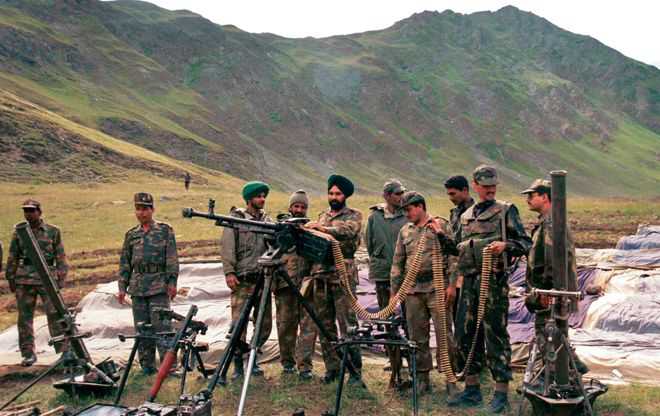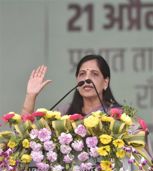
Supreme sacrifice: India lost 527 personnel in the conflict.
G Parthasarathy
Former diplomat
PRECISELY two decades ago, three battalions of the Indian Army were tasked with attacking and recapturing Tiger Hill, the highest peak in the Kargil sector. Tiger Hill is located at the commanding heights over the vital highway connecting Srinagar to Ladakh. The operations, which commenced in the last week of May 1999, and were accompanied by a battle for the adjoining peak of Tololing, ended successfully on July 3-4, 1999. Control of the high peaks of Tiger Hill had enabled Pakistani forces to monitor the movement of our forces and disrupt supplies to our troops in Siachen. Coinciding with these events, then Pakistan PM Nawaz Sharif paid a hurried visit to Washington and agreed to pull back his forces in Kargil on July 4 — America’s Independence Day!! This happened after then PM Atal Bihari Vajpayee had rejected US President Bill Clinton’s offers of mediation.
The Kargil conflict took place when India and Pakistan were under economic pressure from UN-backed sanctions after their nuclear tests in May 1998. The Clinton Administration was determined to ‘curb, roll back and eliminate’ India’s nuclear weapons programme. Pakistan took advantage of the prevailing situation. Infiltration by the Pakistan army into the Kargil sector reportedly commenced around the same time as the N-tests. While the Nawaz Sharif government was initially unaware of these developments, it backed its army’s actions whole-heartedly once General Pervez Musharraf briefed it. Contrary to popular perception, Nawaz was briefed on more than one occasion on what was happening, including at the Pakistan army’s Regional Headquarters in Skardu.
India’s intelligence services learnt of the infiltration only around a year later, resulting in an ugly blame game over who was responsible for a serious intelligence failure. PM Vajpayee had meanwhile decided that one way to deal with America-led international pressure was to try and make peace with Pakistan. It was decided that as a ‘grand gesture’, Vajpayee would visit Pakistan by bus to inaugurate the Lahore-Delhi bus service. Vajpayee was unaware of what was happening across the Line of Control in Kargil when he arrived in Lahore. Arriving in Islamabad a few months before Vajpayee’s visit, I found the atmosphere marked by Pakistani duplicity. Nawaz’s close aides such as Information Minister Mushahid Hussain were inciting Sikh pilgrims from across the world, even as Mushahid and the Punjab Governor were in touch with Lashkar-e-Taiba leader Hafiz Saeed.
Vajpayee, who was and remains widely respected in Pakistan, was warmly received. The Service Chiefs did not receive him on arrival, but called on him at the Governor’s residence in Lahore, where he was staying. He delivered a masterly speech at a civic reception in Lahore, which moved the audience. The Pakistan military and significant sections of its political establishment appeared to think otherwise. The intentions of the Pakistan establishment were evident during Vajpayee’s visit, even in negotiations for finalising the Joint Declaration. Vivek Katju, who then headed the Pakistan Division, handled these negotiations firmly and skilfully. There was also no respite from terrorist strikes in J&K in the months preceding and following Vajpayee’s visit.
The Indian Army, particularly its young officers and jawans, deserve the nation’s gratitude for the valour they showed in battle after climbing high peaks in Kargil. Eleven years later, Pakistan acknowledged that 453 of its soldiers were killed in the conflict. They could afford to obfuscate as the soldiers killed were largely Shias from Gilgit-Baltistan. Indian casualties were 527 killed and 1,363 wounded.
Vajpayee visited the Army operations room in the third week of May 1999 for a briefing by the Army Chief, General VP Malik, which I attended. The Army Chief gave a detailed account of Pakistani infiltration and assured Vajpayee that the Army would throw out all intruders. General Malik alluded to the need for air support, a proposal Vajpayee accepted the same day, with the condition that IAF aircraft should not cross the LoC.
I was told to return immediately to Islamabad as airstrikes were commencing the next morning. The IAF was confident that its MiG-29s and Mirage 2000s could take on the PAF, equipped with American F-16s. The PAF stayed away from coming too close to the LoC. Two IAF aircraft were brought down by Pakistani surface-to-air missiles: a MiG-21F piloted by Squadron Leader Ajay Ahuja, who lost his life, and a MiG-27L piloted by Flight Lieutenant Nachiketa, who was captured. The Pakistanis sought to play their usual games by arranging a huge media event to showcase their ‘generosity’ during a conflict, offering to release Nachiketa in my presence at the Foreign Office. I refused to attend the proposed ‘release’ function, describing it as a ‘media spectacle’ demeaning the dignity of an IAF officer captured in combat. The International Red Cross then handed Nachiketa over to us inside the Indian High Commission the same evening.
The Kargil conflict brought home many hard truths for us. The Pakistan army, which rules the country, is not going to forget its 1971 humiliation. It will try and take some form of revenge, whenever it can. Enmity towards India is essential for its very existence and for it to continue as de facto ruler of the country. With Vajpayee’s approval, we continued issuing visas to Pakistanis liberally during the Kargil conflict. The Lahore Bus Service and the Samjhauta Express functioned normally. While Pakistanis were being misled by screams of imminent victory and azadi for Kashmiris, calm and determined Indians were going about their normal lives.
Let us mark the 20th anniversary of the Kargil conflict soberly and appropriately, with national tributes to General VP Malik and his brave soldiers, as also to Air Chief Marshal Anil Yashwant Tipnis, the fighter pilots and others in the IAF.



























